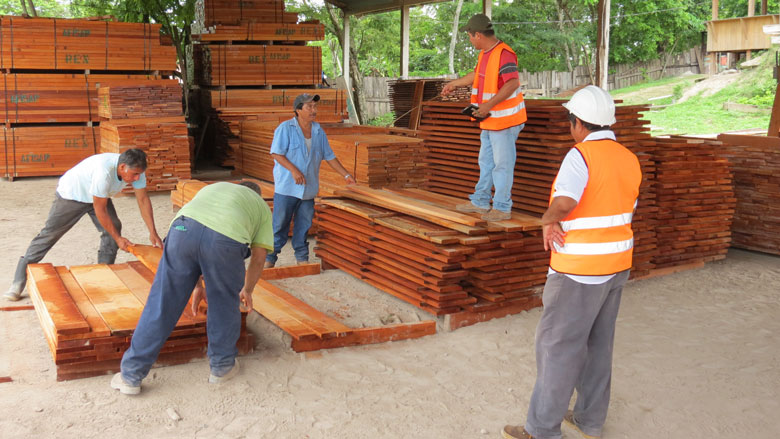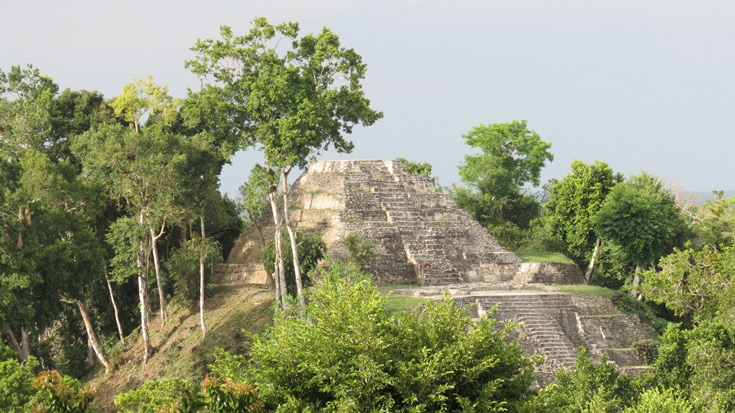Challenge
By the mid-2000’s, Guatemala was facing the highest level of inequality in the Latin America and the Caribbean Region, particularly affecting poor and vulnerable rural, indigenous populations. A key government priority was the development of a coherent, overarching rural development strategy, supported by well-resourced and well-managed programs to have the highest impact on poverty reduction in rural areas. To that end, a number of studies and reports provided guidance to the government on its Strategic Agenda for Integrated Rural Development (approved in March 2005), which proposed a vision for rural development that extended beyond agriculture to adopt a more comprehensive approach based on the development of institutions and infrastructure and the promotion of opportunities for broad-based growth in rural areas. One of the programs supporting this strategy was the Rural Economic Development Program (PDER). The World Bank and IADB were invited by the government of Guatemala to support the further development of the Program and its implementation.
Solution
PDER sought to support broad-based rural growth through enhancing the competitiveness of the supply-chain with strong indigenous participation. The project focused on scaling-up an approach known as “productive linkages,” promoted by private entities (especially AGEXPORT).
The approach aimed at enhancing the capacities of small-scale producers/small businesses to take advantage and consolidate business opportunities through supporting technological and productive infrastructure upgrades, and by strengthening producer organizations’ backward and forward linkages.
The project design brought additional innovations by linking supply-chain investments with broad productive public infrastructure investments (construction of roads/bridges), therefore supporting a more holistic approach to competitiveness.
Rural Producer Organizations (RPOs) with the support of service providers and commercial partners agreed on a business proposition (Business Plan) that was to be assessed and co-financed by the Project. Furthermore, building public sector capacities for territorial planning/management was seen as a way of contributing, over the long term, to the prioritization of public and private investments in support of rural competitiveness.
Results
Supply-chain competitiveness:
- Aggregated increase in total sales of partnerships reached US$16.4, representing a 64% increase in the value of sales from the business plan’s baseline.
- Project investments increased access to productive assets, technologies, and strengthened entrepreneurial capacity. 216 partnerships were supported, 27 with business training, the remaining through a combination of entrepreneurial business services and investment funds for technological upgrading, small infrastructure, and/or capitalized expenses. 22 partnerships benefited from the construction of collective productive infrastructure.
- Investments covered 13 supply chains, characterized by high participation from indigenous people.
- Direct partnership beneficiaries: 20,001, 90% indigenous (13,276 male, 6,275 female). In 40 RPOs, more than half of the members were women; and 16 of these had only female membership.
- 79% of partnerships’ direct beneficiaries were located in seven departments, with high levels of poverty.
- 94% of bridge reconstruction efforts were concentrated in Totonicapán, Chimaltenango, and Baja Verápaz (extreme poverty rates of 24.5%, 15.4%, and 27.3%, respectively, in 2011).
Capacities for territorial planning/management
Territorial Planning Model implemented in eight departments, leading to strong links between planning and investments. Of the projects included in the Annual Operating Plans, 65% were part of local governments’ own agendas and 35% were the result of participatory planning processes.
- Development of instruments for planning (e.g. national atlas of risk perception/local level)
- Formulation of the National Development Plan: K’atun Nuestra Guatemala 2032.
- 98% of the municipalities in the country had municipal plans.
- Strengthened SINIT for geo-statistical information/spatial data.
- 500 municipal staff trained.
Bank Group Contribution
The combined loan amount between the IADB and the IBRD was US$60m (US$30m each). Total final investments reached US$45.45m (US$29.14 by IBRD and 16.4m by IADB). Allocations to support supply chain partnerships, including bridge rehabilitation/construction, reached US$34.25 million; a total of US$8.96m were allocated to strengthening capacities for territorial planning/managing and US$1.32m support project monitoring and evaluation. The project involved a front-end fee of US$0.75m and also included a Trust Fund TF057254 (US$114,409).
Partners
PDER was aligned with the country strategy for rural development and supported by IBRD and IADB. Within IBRD, the project was led by two units (agriculture and transport). The agencies organized joint missions.
The institutional arrangements reflected the multi-sectoral nature of the project and agencies mandates:
- Presidential Secretariat for Planning and Programming (SEGEPLAN), the coordinating agency for the project and responsible for Component 2.
- Ministry of the Economy (MINECO). Subcomponents 1.1, 1.2 and in later years also 1.3.
- Social Investment Fund (FIS). Subcomponent 1.3. The Agency closed in 2007.
- Telephony Development Fund (FONDETEL). Subcomponent 1.4 (Withdrew in 2011)
- National Peace Fund (FONAPAZ). Replaced FIS for Subcomponent 1.3. The agency closed in 2012.
Moving Forward
Support to supply-chain competitiveness continues under the Enhancing SME Productivity Project implemented by MINECO with WB funds. For SEGEPLAN to sustain the gains achieved so far, the government’s continued commitment is key. The new responsibilities assigned by law to SEGEPLAN for monitoring sectorial and territorial planning signal this commitment, which needs to be supported by budgetary allocations.
Maintenance plans for bridge infrastructure were signed by 100% of beneficiary municipalities; however, the sustainability of these investments depends on whether the municipalities have not only the will, but the capacity to maintain these structures. Many regions may require TA from the national level.



